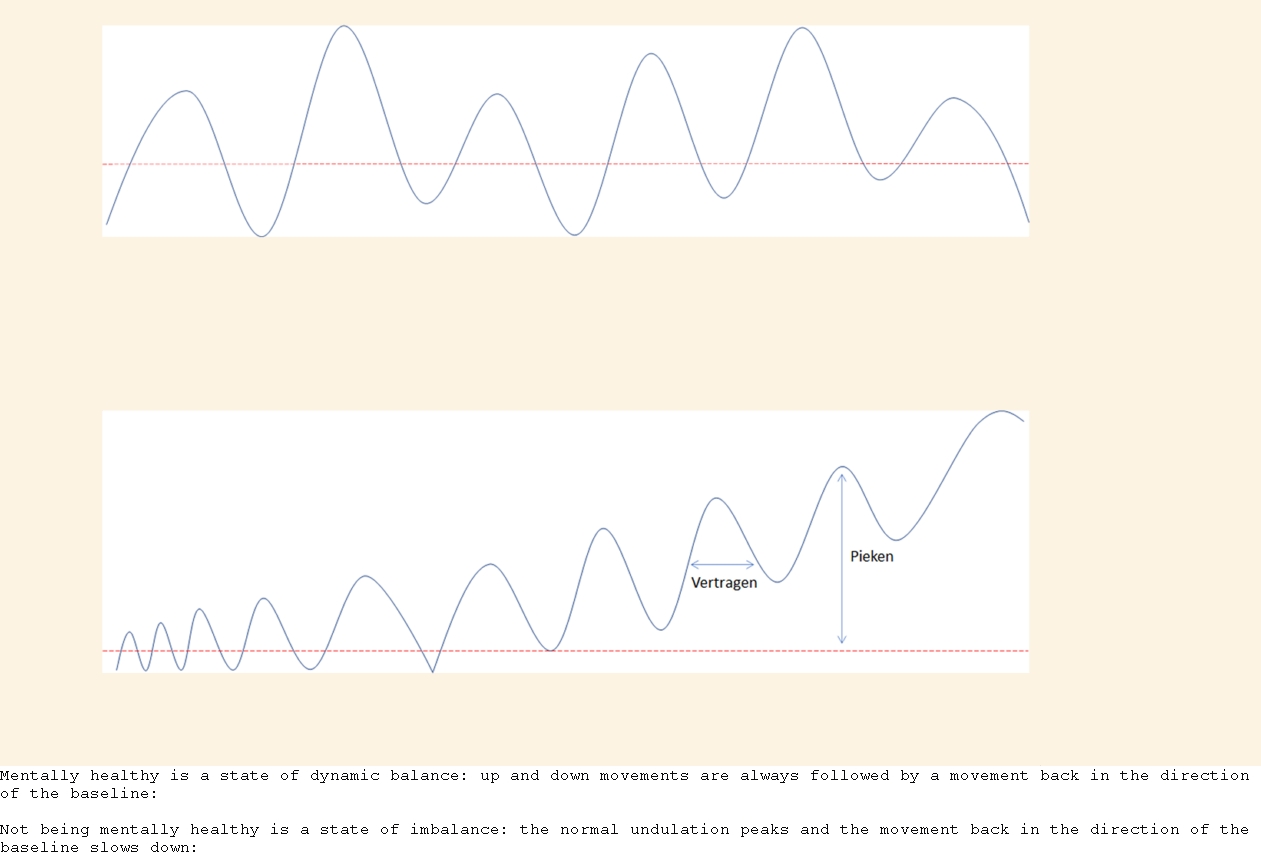
Dynamic balance. Today we dive even deeper into the fascinating world of our mental health and the mental dimension, with a special focus on the dynamic of our inner life and the art of self-regulation.
Welcome back, readers of PsychosisNet. In the previous blogs we have looked extensively at the nuances of mental health care and the deep waters of human awareness and emotions.
Imagine a river that constantly flows
That’s exactly how our mental life unfolds itself: an endless stream of changes, thoughts, and feelings. We are not only passive observers of our environment, but also active participants who continuously evaluate our position and our relationships in it.
In this complex process emotions play a leading part. They are like indicators that help us anticipate what is about to come. Fear warns us of danger, love encourages us to take risks, and joy brings us closer together. Life inside our head is a continuous dance of predictions and reactions, a game of anticipating the future. It is this ‘game’ that shapes our consciousness.
So what makes us mentally healthy?
The answer lies in a dynamic balance. This dynamic balance causes not one emotional state to be permanent. We can be fearful, gloomy, or ecstatic, but eventually we always return to our baseline. This contant movement, this flexibility, is what keeps us mentally healthy.
Of course this dynamic balance is different for everybody. Some of us experience subtle undulations, whilst others swing more heavily. These variations partly shape our unique personalities and the way we interact with the world around us.
Dynamic balance: What happens if this balance is disrupted?
Then there is psychological suffering. It’s a state in which the normal undulation of our emotions and thoughts peaks and deforms, which makes returning to the baseline impossible.
Mentally healthy is a state of dynamic balance: up and down movements are always followed by a movement back in the direction of the baseline:
Not being mentally healthy is a state of imbalance: the normal undulation peaks and the movement back in the direction of the baseline slows down:

This manifests itself in several ways, from anxiety disorders to addictions and eating disorders. It undermines our feeling of existence and our connection to the future.
Mental health is more than the absence of illnesses
Insight into this dynamic of mental health offers us a new perspective. It helps us understand that mental health is more than the absence of illnesses. It’s an active and dynamic process of self-regulation, of constantly tuning into the challenges of life. This insight can fundamentally change the way we think about, and deal with, mental health and psychological suffering.
Let’s embrace this knowledge and use it as a compass to lead us to a safer, healthier, and more balanced life. Because at the end of the day, we all travel on the river of life, in search of our unique way to well-being.
Warm greetings, Jim





I appreciate the detailed information shared here. I’ve been searching for information like this for a while. I’m bookmarking this for future reference. I’m definitely going to share this with my friends. This article is a treasure trove of information! Your perspective on this topic is refreshing!